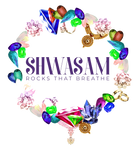Ruby, a captivating gemstone of vivid red hues has enraptured humanity for centuries with its allure and symbolism. Belonging to the corundum mineral family, alongside sapphires, its name derives from the Latin word "ruber," meaning red, reflecting its distinctive coloration. Renowned for its rarity and durability, rubies have been treasured throughout history, adorning the crowns and jewelry of royalty and nobility across cultures.
Revered for its association with passion, vitality, and protection, this gemstone has garnered mystical significance in various traditions, believed to promote love, courage and prosperity while warding off negativity. Beyond its aesthetic appeal, rubies hold scientific importance, with their unique optical properties fascinating researchers. From ancient civilizations to modern times, the allure of the ruby continues to captivate hearts and minds, cementing its place as a timeless symbol of beauty and strength.

Ruby stone (Manik stone) is the most fascinating gemstone known for decades. Kings and queens have admired the enchanting red allure of this precious gem since antiquity. These gems are preferred for jewelry and astrological purposes.
Ruby's uses include offering the wearer health, wealth, mental and healing benefits. If you are a gem connoisseur or a jewelry enthusiast, it is essential to find valuable tips before buying this precious gemstone. Ruby gemstone is also known as Chuni Stone in Bengali. This blog sheds light on the same.
1.Origin of Ruby
Natural ruby stones are sourced from various locations such as Burma, Mozambique, Madagascar, India, Thailand, and the US. The color of these beautiful stones ranges from pinkish red to deep red depending upon the origin of it.
Burma Rubies are considered the finest gemstones valued for their vivid red hue. These gems' color is called "pigeon red blood." They are considered rare and hold a significant value. Besides this, ruby stones sourced from Madagascar, Mozambique ruby, and Thailand are also loved for their incredible color. These gems also have value in the market.
2. Color of Ruby Gemstone
Ruby stone with a vivid red hue, medium tone and high saturation. The primary color of these stones, though, tends to be red, but secondary overtones also reflect them.
Purple and pink are the most common secondary hues that appear in most of the rubies. However, a high variation of either of these colors degrades the value of the gemstones. For instance, high pink overtones in the gemstone might be misled with pink sapphires. For a ruby to be genuine, it should have a red color.
3.The Art of Ruby Cutting and its Impact

Gemstone cutting plays a pivotal role when considering its purchase. A faceted and symmetrical cut gives the gem a beautiful look. Moreover, it increases the value of the stone as well. Skilled lapidaries should consider various factors while providing a desired cut to the gemstone.
A perfect cut should maximize the color and carat weight of the gemstone, simultaneously minimizing the inclusions. Ruby gemstone looks ideal in any cut, ranging from round or oval to cushion or marquise.
It is essential to purchase a well-cut gemstone as it takes the limelight of the show. For instance, besides round being the most popular shape, a well-cut, heart-shaped ruby stone is a stunning piece.
4. Ruby Gemstone's Influence on Cancer and Leo Career Growth
Ruby gemstone belongs to Cancer and Leo zodiac signs. For Cancerians, Ruby ignites passion and determination, enhancing their career growth by infusing them with confidence and ambition. It helps them overcome obstacles, excel in leadership roles, and attract opportunities for advancement. The stone's fiery energy resonates with Leo's bold nature, fostering courage and creativity in their professional pursuits. Ruby encourages Leos to pursue their dreams fearlessly, guiding them towards success and recognition.

Additionally, its grounding properties keep both Cancerians and Leos calm amidst challenges, promoting emotional stability and resilience. During stressful situations, Ruby acts as a source of strength, instilling a sense of inner peace and harmony. Its vibrant red hue symbolizes vitality and vitality, reminding Cancerians and Leos to stay determined and focused on their career goals while embracing life's ups and downs with grace.
5. Rich History and Symbolism

Ruby gemstone holds significant historical importance, especially in Medieval Europe, where it was adorned for its associations with health, wealth, wisdom, and love. Royalty often wore ruby finger rings, gifting them to their sons as symbols of blessings and loyalty. In ancient times, only the affluent could afford this precious stone, highlighting its status as a symbol of wealth and privilege. As the birthstone for July, Ruby is believed to bring harmony to the lives of its wearers.
It serves as the anniversary stone for the 40th anniversary, known as the ruby jubilee, signifying enduring love and commitment. These intriguing facts about Ruby gemstone are lesser-known but add to its mystique and allure, enriching its symbolism beyond its stunning appearance.
6. Hardness & Strength
Ruby is renowned for its exceptional hardness, ranking 9 on the Mohs scale, making it one of the toughest gemstones. Its strength symbolizes power and protection, which has made it highly valued throughout history. At Shwasam Crystals, we offer a stunning collection of Ruby carvings and jewelry. Explore our collection and choose your favorite Ruby treasure.
 USD
USD EUR
EUR
 AUD
AUD
 GBP
GBP
 INR
INR


